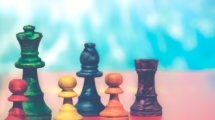The Psychology of Prejudice: Why We Judge Others
Introduction
Prejudice is an intrinsic aspect of human behavior, often arising from our innate tendency to categorize and simplify the vast complexity of our social world. This article delves deep into the psychology of prejudice, examining the cognitive processes, social dynamics, and emotional underpinnings that lead to judgment against others based on characteristics such as race, gender, sexuality, and socioeconomic status.
Understanding why we judge others is crucial in efforts to combat discrimination and foster a more inclusive society. By exploring the various dimensions of prejudice, we can better grasp the factors that influence our perceptions and ultimately work towards reducing bias.
The Cognitive Foundations of Prejudice
1. Cognitive Schemas
Our brains are wired to create cognitive schemas—mental frameworks that help us organize and interpret information. These schemas simplify the processing of complex social information, allowing us to navigate our environments efficiently. However, they can also lead to the development of stereotypes, which are oversimplified and if not checked, often erroneous ideas about groups of people.
For instance, if someone has a schema that associates a particular ethnic group with negative behavior, they may be quick to judge individuals from that group regardless of their actual actions. This cognitive shortcut is efficient but can foster prejudice.
2. Ingroup vs. Outgroup Dynamics
Humans have a natural tendency to categorize themselves and others into ingroups (those we identify with) and outgroups (those we do not). The social identity theory posits that we derive part of our identity from the groups we belong to, leading to a preference for our ingroups. This preferential treatment can escalate to outgroup derogation, where members of the outgroup are viewed as inferior or threatening.
This dynamic is evident in various social contexts, including sports, politics, and culture, where loyalty to one’s group can foster a sense of belonging while also breeding hostility toward others.
3. The Role of Confirmation Bias
Confirmation bias is the tendency to search for, interpret, and remember information that confirms one’s preexisting beliefs. In the context of prejudice, individuals may seek out or give more weight to information that aligns with their biases against certain groups while ignoring contradictory evidence. For instance, if someone believes that a particular racial group is prone to criminal behavior, they are more likely to focus on news stories that support this view and dismiss narratives that counter it.
Social and Environmental Factors
4. Early Socialization
Prejudice often begins in childhood, shaped by the attitudes and beliefs of parents, peers, and society at large. Children learn to identify groups and adopt societal norms, which can include prejudiced beliefs. Exposure to diverse environments during formative years can mitigate these prejudices, while homogenous surroundings may reinforce them.
5. Media Influence
Media representation plays a significant role in shaping perceptions of different groups. Positive or negative portrayals can reinforce existing stereotypes or challenge them. For example, when media frequently depicts certain groups in a negative light, it can perpetuate societal prejudice, while positive representations can help break down barriers.
6. Economic Competition
Competition for resources can exacerbate prejudice, particularly in times of economic strife. When individuals feel threatened by limited opportunities, they may project their frustrations onto marginalized groups, blaming them for their struggles. This scapegoating can lead to increased animosity and blame directed at perceived outgroups.
Emotional Underpinnings of Prejudice
7. Fear and Anxiety
Fear is a powerful driver of prejudice. When individuals encounter those who are different, it can evoke anxiety or insecurity. This discomfort often manifests itself as prejudice. When faced with ambiguity or uncertainty, people might cling to stereotypes and group identities, using them as a defense mechanism against the unknown.
8. Anger and Resentment
Anger can also fuel prejudice. Individuals who feel marginalized or oppressed may target other groups to express their frustrations. This cycle of anger can perpetuate a sense of division and hostility, further entrenching prejudicial beliefs.
Implications of Prejudice
9. Social Consequences
Prejudice has wide-ranging social consequences, including discrimination in employment, education, and housing. These biases perpetuate systemic inequality, limiting opportunities for marginalized groups. The ramifications of prejudiced attitudes can thus be profound and lasting, affecting generations.
10. Psychological Impact
For those who are targets of prejudice, the psychological toll can be significant. Experiences of discrimination can lead to chronic stress, anxiety, and depression. The internalization of negative stereotypes can damage self-esteem and lead to a phenomenon known as stereotype threat, where individuals perform poorly due to the fear of confirming negative stereotypes.
Combating Prejudice
11. Education and Awareness
One of the most effective ways to combat prejudice is through education. Awareness on the nature and consequences of prejudice can help individuals recognize their biases and challenge their preconceived notions. Programs that promote diversity and inclusion can foster dialogue and empathy, paving the way for mutual understanding.
12. Intergroup Contact
The contact hypothesis suggests that reducing prejudice can be achieved through direct interaction between members of different groups. When individuals from diverse backgrounds engage in meaningful exchanges, stereotypes can be challenged, and relationships can be built. Structured intergroup contact, such as cooperative tasks or shared goals, can be particularly effective.
13. Promoting Empathy
Cultivating empathy is a crucial component in overcoming prejudice. Encouraging individuals to actively listen to and understand the experiences of others can foster compassion. Empathy-building exercises, such as storytelling or perspective-taking activities, can challenge biases by humanizing those who are often objectified.
Conclusion
Prejudice remains a pervasive issue that affects individuals and societies worldwide. Understanding the psychology behind our judgments allows us to confront our biases and work towards a more equitable and inclusive society. By addressing the cognitive, social, and emotional factors that contribute to prejudice, we can begin to dismantle the barriers that divide us.
References
[1] Allport, G. W. (1954). The Nature of Prejudice. Addison-Wesley. [2] Tajfel, H., & Turner, J. C. (1986). The Social Identity Theory of Intergroup Behavior. In W. G. Austin & S. Worchel (Eds.), Psychology of Intergroup Relations (pp. 7-24). Nelson-Hall. [3] D. T. (2000). The Nature of Prejudice Revisited. The Public Interest, 135, 29-52. [4] Pettigrew, T. F., & Tropp, L. R. (2006). A Meta-Analytic Test of Intergroup Contact Theory. Journal of Personality and Social Psychology, 90(5), 751. [5] S. C. (1998). Prejudice: A Social-Psychological Perspective. Routledge. [6] D. L. (2014). The Psychology of Stereotyping. Guilford Press. [7] G. R. (2017). Combating Prejudice: A Guide for Educators. Corwin Press. [8] R. T., & D. C. (1995). Racism and Psychology: A Review of the Literature. American Psychologist, 50(6), 490.This exploration only scratches the surface of a deeply complex issue. To thoroughly engage with the topic of prejudice involves ongoing learning, reflection, and dialogue. Only through understanding and cooperation can we hope to build a society free from the shackles of bias.


























Add Comment